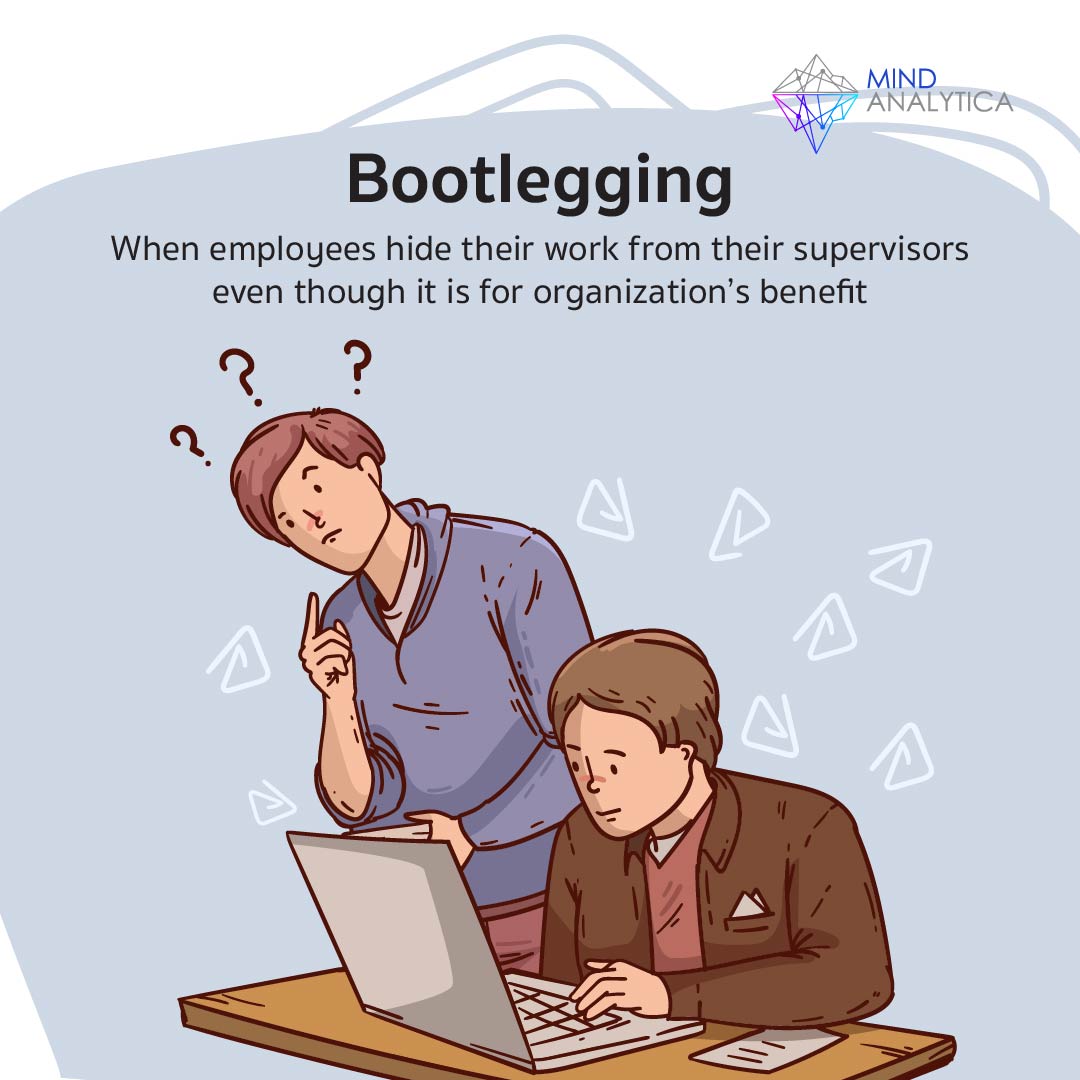Bootlegging
6 กุมภาพันธ์ 2567 - เวลาอ่าน 4 นาที
When employees hide their work from their supervisors even though it is for organization’s benefit.
Employees working towards advancement and generating revenue for the company is an ideal situation for every leader. This work can come from both tasks formally assigned by the leader, or sometimes from employees keeping it a secret from their leader.
This work behavior is called Bootlegging, which by definition is when employees start work or projects without the formal approval or support of their organization, and is mostly kept a secret from their leaders. However, these works or projects aim to create new innovations that are beneficial to the organization.
A 2012 survey by Peter Augsdorfer found that 80% of companies surveyed in Germany had high levels of bootlegging, with employees spending 10% of their work time on bootlegging.
The reason why employees often engage in bootlegging is because their interests and plans do not align with the strategies of the company or the leader themselves, and are often rejected. If the project is likely to be successful, the employee decides to proceed in secret from the organization.
However, bootlegging is a behavior that many organizations may not want to happen, as it is a double-edged sword. Although it can create new innovations that benefit the organization, it also uses time and resources that were not originally allocated. This can lead to less time spent on core projects, which can reduce the efficiency of core projects.
Researchers have studied why employees have different levels of bootlegging. They found a relationship between bootlegging behavior and the following phenomena:
1. Leader characteristics: Leaders who use humor (Zhang et al., 2023) or humility (Qu et al., 2013) in their work with subordinates are more likely to have high levels of bootlegging.
2. Work-related energy from the relationship with the leader: If the relationship with the leader is in a good direction, subordinates will have more ideas for new innovations and engage in more bootlegging.
3. Organizational structure: A relatively strict organizational structure that allows only work-related matters and communicates only important things makes employees more likely to hide what they are doing, leading to more bootlegging.
4. Closed communication in the organization: Bootlegging behavior is therefore caused by employees having the energy to create new innovations, but the communication structure in the organization that blocks new ideas makes employees choose to keep the project a secret.
Bootlegging is a form of organizational innovation that employees choose to hide from the organization. If the organization wants to promote such behavior, it should start by creating work energy from leaders who can create humor in the workplace or leaders who are humble in their work with subordinates. However, it should also use a relatively strict organizational structure in the workplace.
On the other hand, if the organization sees bootlegging as detrimental to core projects and wants employees to spend too much time on other tasks, the organization should reduce employee work energy through a less humorous and more serious work environment. At the same time, the organizational structure should not be too strict that employees have to keep their work a secret from their leaders.
Conclusion
Bootlegging is a complex issue with both positive and negative aspects. Organizations should carefully consider the factors that influence bootlegging behavior before deciding whether to promote or discourage it.
References
- Augsdorfer, P. (2012). Bootlegging: When employees take innovation into their own hands. MIT Sloan Management Review, 53(4), 49-55.
- Zhang, X., Chen, X., & Fang, S. (2023). Leader humor and employee bootlegging: The mediating role of work engagement and the moderating role of job autonomy. Journal of Business Research, 160, 1104-1114.
- Qu, X., Zhang, X., & Fang, S. (2013). Leader humility and employee bootlegging: The mediating role of psychological safety and the moderating role of perceived organizational support. Journal of Organizational Behavior, 34(6), 784-802.



